Alfred McCoy rounds up 50 years of racist U.S. policymaking on drug abuse, first by Republicans Nixon and Reagan and then by Democrat Bill Clinton.
By Alfred McCoy
TomDispatch.com
 Fifty years ago, on June 17, 1971, President Richard Nixon stood before the White House press corps, staffers at his side, to announce “a new, all-out offensive” against drug abuse, which he denounced as “America’s public enemy number one.” He called on Congress to contribute $350 million for a worldwide attack on “the sources of supply.” The first battle in this new drug war would be fought in South Vietnam where, Nixon said, “a number of young Americans have become addicts as they serve abroad.”
Fifty years ago, on June 17, 1971, President Richard Nixon stood before the White House press corps, staffers at his side, to announce “a new, all-out offensive” against drug abuse, which he denounced as “America’s public enemy number one.” He called on Congress to contribute $350 million for a worldwide attack on “the sources of supply.” The first battle in this new drug war would be fought in South Vietnam where, Nixon said, “a number of young Americans have become addicts as they serve abroad.”
While the president was declaring his war on drugs, I was stepping off a trans-Pacific flight into the searing tropical heat of Saigon, the South Vietnamese capital, to report on the sources of supply for the drug abuse that was indeed sweeping through the ranks of American soldiers fighting this country’s war in Vietnam.
As I would soon discover, the situation was far worse than anything Nixon could have conveyed in his sparse words. Heroin vials littered the floors of Army barracks. Units legendary for their heroism in World War II like the 82nd Airborne were now known as the “jumping junkies.” A later survey found that more than a third of all GIs fighting the Vietnam War “commonly used” heroin. Desperate to defeat this invisible enemy, the White House was now about to throw millions of dollars at this overseas drug war, funding mass urinalysis screening for every homeward-bound GI and mandatory treatment for any who tested positive for drugs.

Jan. 23, 1966: Allied troops, including the U.S. 101st Airborne Brigade, moving across a rice field in search of Viet Cong. (U.S. National Archives)
Even that formidable effort, however, couldn’t defeat the murky politics of heroin, marked by a nexus of crime and official collusion that made mass drug abuse among GIs possible. After all, in the rugged mountains of nearby Laos, Air America, a company run by the CIA, was transporting opium harvested by tribal farmers who were also serving as soldiers in its secret army.
The commander of the Royal Lao Army, a close ally, then operated the world’s largest illicit lab, turning raw opium into refined heroin for the growing numbers of GI users in neighboring Vietnam. Senior South Vietnamese commanders colluded in the smuggling and distribution of such drugs to GIs in bars, in barracks, and at firebases. In both Laos and South Vietnam, American embassies ignored the corruption of their local allies that was helping to fuel the traffic.
Nixon’s Drug War
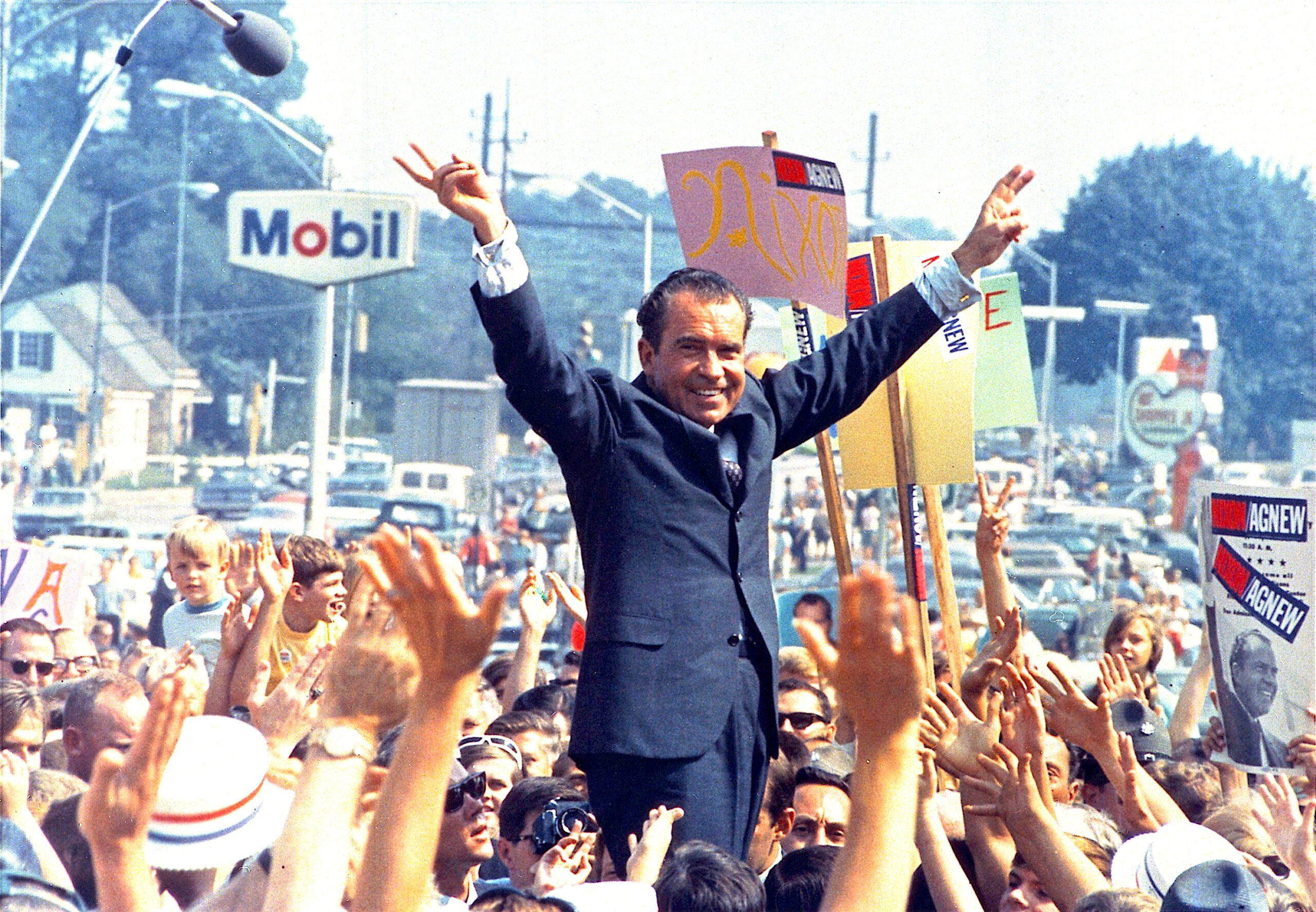
July 1968: Richard Nixon during his presidential campaign. (Ollie Atkins, White House, Wikimedia Commons)
As sordid as Saigon’s heroin politics were, they would pale when compared to the cynical deals agreed to in Washington over the next 30 years that would turn the drug war of the Vietnam era into a political doomsday machine. Standing alongside the president on that day when America’s drug war officially began was John Ehrlichman, White House counsel and Nixon confidante.
As he would later bluntly tell a reporter,
“The Nixon White House had two enemies: the antiwar left and black people… We knew we couldn’t make it illegal to be either against the war or black, but by getting the public to associate the hippies with marijuana and blacks with heroin, and then criminalizing both heavily, we could disrupt those communities. We could arrest their leaders, raid their homes, break up their meetings, and vilify them night after night on the evening news.”
And just in case anyone missed his point, Ehrlichman added, “Did we know we were lying about the drugs? Of course, we did.”
To grasp the full meaning of this admission, you need to begin with the basics: the drug war’s absolute, unqualified, irredeemable failure. Just three pairs of statistics can convey the depth of that failure and the scope of the damage the war has done to American society over the past half-century:
* Despite the drug war’s efforts to cut supplies, worldwide illicit opium production rose 10-fold — from 1,200 tons in 1971 to a record 10,300 tons in 2017.
* Reflecting its emphasis on punishment over treatment, the number of people jailed for drug offenses would also grow 10-fold from 40,900 in 1980 to 430,900 in 2019.
* Finally, instead of reducing domestic use, the drug war actually helped stimulate a 10-fold surge in the number of American heroin users from just 68,000 in 1970 to 745,000 in 2019.
In addition, the drug war has had a profound impact on American society by perpetuating, even institutionalizing, racial disparities through the raw power of the police and prisons. Remember that the Republican Party saw the Voting Rights Act of 1965, which ended decades of Jim Crow disenfranchisement for Blacks in the deep South, as a rare political opportunity. In response, Nixon and his men began developing a two-part strategy for winning over white voters in the South and blunting the Democratic advantage with Black voters nationwide.
First, in the 1970 midterm elections, the Republicans began pursuing a “Southern strategy” of courting disgruntled white-supremacist voters in the South in a successful attempt to capture that entire region politically. Three years later, they launched a relentless expansion of the drug war, policing, and prisons. In the process, they paved the way for the mass incarceration of African Americans, denying them the vote not just as convicts but, in 15 states, for life as ex-convicts.
Pioneering this cunning strategy was New York’s Republican governor Nelson Rockefeller. The harsh mandatory penalties of 15-years-to-life for petty drug possession he got the state legislature to pass raised the number of people imprisoned on drug charges from 470 in 1970 to 8,500 in 1999, 90 percent of them African-American or Latinx.
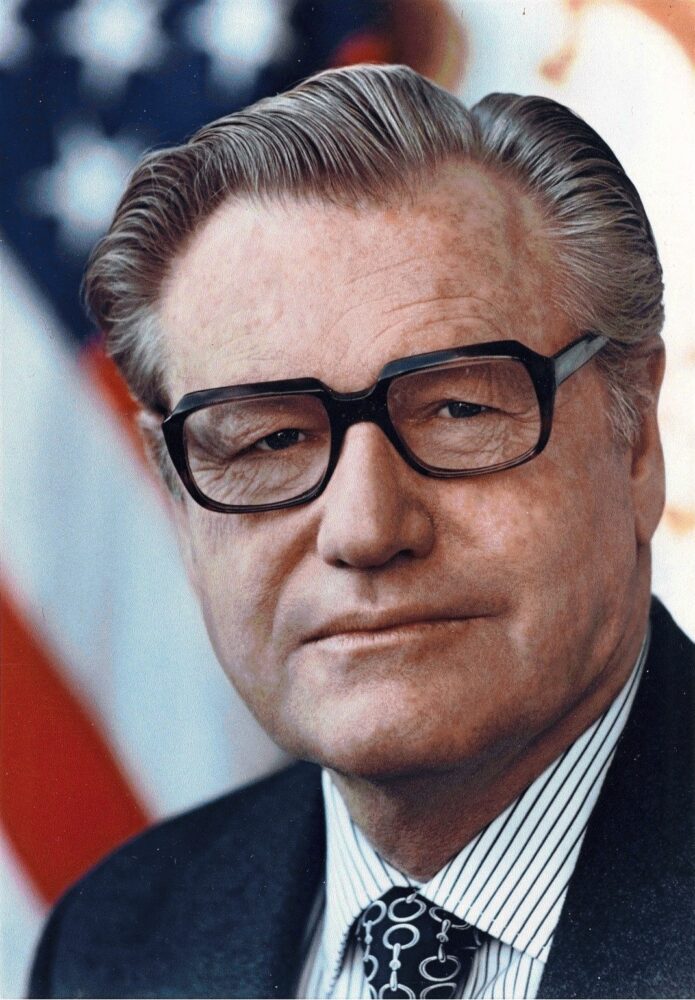
Nelson Rockefeller in 1975, when he was serving as vice president to Gerald Ford. (White House, Wikimedia Commons)
Such mass incarceration moved voters from urban Democratic bailiwicks to rural prisons where they were counted in the census, but otherwise disenfranchised, giving a bit of additional help to the white Republican vote in upstate New York — a winning strategy Republicans elsewhere would soon follow. Not only did the drug war let conservatives shave opposition vote tallies in close elections, but it also dehumanized African Americans, justifying repressive policing and mass incarceration.
None of this was pre-ordained but the result of a succession of political deals made during three presidencies — that of Nixon, who started it; of Ronald Reagan, whose administration enacted draconian punishments for drug possession; and of the Democrat Bill Clinton, who expanded the police and prisons to enforce those very drug laws. After remaining remarkably constant at about 100 prisoners per 100,000 population for more than 50 years, the U.S. incarceration rate started climbing relentlessly to 293 by the end of Reagan’s term in 1990 and 464 by the end of Clinton’s in 2000. It reached a peak of 760 by 2008 — with a racial bias that resulted in nothing less than the “mass incarceration” of African Americans.
Reagan Domesticates the Drug War

Ronald Reagan campaigning with Nancy Reagan in Columbia, South Carolina, October 1980. (Ronald Reagan Library via Wikimedia Commons)
While Nixon fought his war largely on foreign battlefields trying, and failing, to stop narcotics at their source, the next Republican president, Ronald Reagan, fully domesticated the drug war through ever harsher penalties for personal use and a publicity campaign that made abstinence a moral virtue and indulgence a fiercely punishable vice. Meanwhile, he also signaled clearly that he was determined to pursue Nixon’s Southern strategy by staging a major 1980 election campaign rally in Neshoba County, Mississippi, where three civil rights workers had previously been murdered.
Taking office in 1981, Reagan found, to his surprise, that reviving the drug war at home had little public support, largely because the outgoing Democratic administration had focused successfully on drug treatment rather than punishment. So, First Lady Nancy Reagan began crisscrossing the country, while making TV appearances with choruses of cute kids wearing “Just Say No” T-shirts. Even after four years of the First Lady’s campaign and the simultaneous spread of crack cocaine and cocaine powder in cities and suburbs nationwide, only about 2 percent of the electorate felt that drug abuse was the nation’s “No. 1 problem.”
Then personal tragedy provided Reagan with the perfect political opportunity. In June 1986, just a day after signing a multimillion-dollar contract with the NBA’s Boston Celtics, college basketball sensation Len Bias collapsed in his dorm at the University of Maryland from a fatal cocaine overdose. Five months later, President Reagan would sign the Anti-Drug Abuse Act, aka the “Len Bias Law.” It would lead to a quantum expansion of the domestic drug war, including a mandatory minimum sentence of five years just for the possession of five grams of cocaine and a revived federal death penalty for traffickers.
It also put into law a racial bias in imprisonment that would prove staggering: a 100:1 sentencing disparity between those convicted of possessing crack-cocaine (used mainly by inner-city Blacks) and those using cocaine powder (favored by suburban whites) — even though there was no medical difference between the two drugs. To enforce such tough penalties, the law also expanded the federal anti-drug budget to a massive $6.5 billion.
In signing that law, Reagan would pay special tribute to the first lady, calling her “the co-captain in our crusade for a drug-free America” and the fight against “the purveyors of this evil.” And the two of them had much to take credit for. After all, by 1989, an overwhelming 64 percent of Americans had come to feel that drugs were the nation’s “No. 1 problem.”
Meanwhile, thanks largely to the Anti-Drug Abuse Act, Americans jailed for nonviolent drug offenses soared from 50,000 in 1980 to 400,000 in 1997. Driven by drug arrests, in 1995 nearly one-third of all African-American males between 20 and 29 would either be in prison or on parole.
Clinton’s All-Too-Bipartisan Drug War
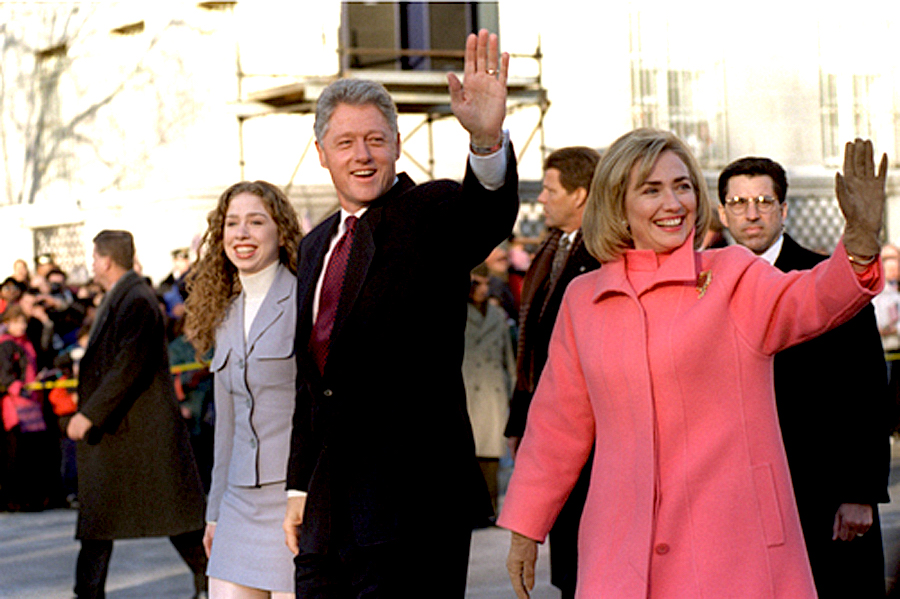
Jan. 20, 1997: President Bill Clinton, First Lady Hillary Clinton and daughter Chelsea parade down Pennsylvania Avenue on Inauguration Day. (White House)
If those two Republican presidents were adept at portraying partisan anti-drug policies as moral imperatives, their Democratic successor, Bill Clinton, proved adept at getting himself reelected by picking up their seductive rhetoric. Under his administration, a racialized drug policy, with its disenfranchisement and denigration of African Americans, would become fully bipartisan.
In 1992, two years after being elected president, Clinton lost control of Congress to Republican conservatives led by House Speaker Newt Gingrich. Desperate for something he could call a legislative accomplishment, he tacked hard right to support the Violent Crime Control Act of 1994. It would prove the largest law-enforcement initiative in American history: nearly $19 billion dollars for 100,000 new cops to sweep the streets for drug offenders and a massive prison-expansion program to house those who would now be sentenced to life after three criminal convictions (“three strikes”).
A year later, when the non-partisan U.S. Sentencing Commission recommended that the 100:1 disparity in penalties for crack-cocaine and cocaine powder be abolished, along with its blatant racial bias, Clinton flatly rejected the advice, signing instead Republican-sponsored legislation that maintained those penalties. “I am not,” he insisted, “going to let anyone who peddles drugs get the idea that the cost of doing business is going down.”
The country’s Black political leaders were eloquent in their condemnation of this political betrayal. The Reverend Jesse Jackson, a former Democratic presidential candidate, claimed Clinton knew perfectly well that “crack is code for black” and labelled the president’s decision “a moral disgrace” by a man “willing to sacrifice young black youth for white fear.” The Congressional Black Caucus would similarly denounce the sentencing disparity as “a mockery of justice.”
As they predicted all too accurately, the relentless rise of Black incarceration only accelerated. In the five years following passage of Clinton’s omnibus crime bill, the country added 204 prisons and its inmate population shot up by a mind-boggling 28 percent to 1,305,300. Of those, nearly half (587,300) were Black, though African Americans made up only 13 percent of the country’s population.
Facing a tough reelection campaign in 1996, Clinton again worked with hard-right congressional Republicans to pass the Personal Responsibility Work Act, which, as he put it, brought an “end to welfare as we know it.” With that law’s work requirement for welfare, even as unemployment among Black residents of cities like Chicago (left behind by industry) hit 20 percent to 25 percent, youth in inner cities across America found that street-level drug dealing was fast becoming their only opportunity. In effect, the Clintons gained short-term political advantage by doing long-term social and economic damage to a core Democratic constituency, the African American community.
Reviving Jim Crow’s Racial Stereotypes
Nonetheless, during his 1996 reelection campaign, Clinton trumpeted such dubious legislative achievements. Speaking at a campaign rally in New Hampshire, for instance, Hillary Clinton celebrated her husband’s Violent Crime Control Act for taking back the streets from murderous minority teenagers. “They are often the kinds of kids that are called ‘super-predators,’” Clinton said. “No conscience, no empathy. We can talk about why they ended up that way, but first we have to bring them to heel.”
The term “super-predator” had, in fact, originated with a Princeton University political scientist, John Dilulio, who described his theory to the first couple during a 1995 White House working dinner on juvenile crime. In an article for a neo-conservative magazine that November, the academic trumpeted his apocalyptic analysis. Based solely on the spottiest of anecdotal evidence, he claimed that “black inner-city neighborhoods” would soon fall prey to such “super predators” — a new kind of juvenile criminal marked by “impulsive violence, the vacant stares, and the remorseless eyes.” Within five years, he predicted, there would be 30,000 “more murderers, rapists, and muggers on the streets” who would “place zero value on the lives of their victims, whom they reflexively dehumanize as just so much worthless ‘white trash.’” This rising demographic tide, he warned, would soon “spill over into upscale central-city districts, inner-ring suburbs, and even the rural heartland.”
By the way, the truly significant part of Hillary Clinton’s statement based on Dilulio’s “analysis” was that phrase about bringing super-predators to heel. A quick quiz. Who or what does one “bring to heel”: (a.) a woman, (b.) a man, or (c.) a child? Answer: (d.) None of the above.
That term is used colloquially for controlling a leashed dog. By implicitly referring to young Black males as predators and animals, Clinton was tapping into one of America’s most venerable and virulent ethnic stereotypes: the Black “buck” or “brute.” The Jim Crow Museum of Racist Memorabilia at Ferris State University in Michigan reports that “the brute caricature portrays black men as innately savage, animalistic, destructive, and criminal — deserving punishment, maybe death… Black brutes are depicted as hideous, terrifying predators.”
Indeed, Southern fiction of the Jim Crow era featured the “Black brute” as an animal predator whose natural prey was white women. In words strikingly similar to those Dilulio and Clinton would later use for their super-predator, Thomas Dixon’s influential 1905 novel The Clansman: A Historical Romance of the Ku Klux Klan described the Black brute as “half child, half animal… a being who, left to his will, roams at night and sleeps in the day, whose speech knows no word of love, whose passions, once aroused, are as the fury of the tiger.” When turned into a movie in 1915 as The Birth of a Nation (the first film ever screened in the White House), it depicted a Black man’s animalistic rape of a virtuous white woman and reveled in the Klan’s retribution by lynching.
In effect, the rhetoric about “super-predators” revived the most virulent stereotype from the Jim Crow lexicon. By 2000, nearing the end of Clinton’s term, nearly every state in the nation had stiffened its laws on juveniles, setting aside family courts and sending young, mainly minority, offenders directly to adult prisons for long sentences.
Of course, the predicted wave of 30,000 young super-predators never happened. Instead, violent juvenile crime was already declining when Hillary Clinton gave that speech. By the time President Clinton’s term ended in 2001, the juvenile homicide rate had fallen well below its level in 1985.
Amazingly, it would be another 20 years before Hillary Clinton was compelled to confront the meaning of those freighted words of hers. While she was speaking to a donors’ meeting in South Carolina during her 2016 presidential campaign, Ashley Williams, a young Black activist, stood up in the front row and unfurled a small banner that read: “We have to bring them to heel.” Speaking calmly, she asked: “Will you apologize to black people for mass incarceration?” And then she added, “I am not a super-predator, Hillary Clinton.”
Ashley Williams interrupts Hillary Clinton to ask her why she called Black children Super-Predators #WhichHillary pic.twitter.com/DxGcCQoeTg
— E (@DevotedTroubler) February 25, 2016
When Clinton tried to talk over her, she insisted: “I know that you called Black people super-predators in 1994.” As the Secret Service hurried that young woman out of the room amid taunts from the largely white audience, Clinton announced, with a palpable sense of relief, “Okay, back to the issues.”
In its report on the incident, The Washington Post asked Clinton for a comment. In response, she offered the most unapologetic of apologies, explaining that, back in 1994, she had been talking about “violent crime and vicious drug cartels and the particular danger they pose to children and families.”
“As an advocate, as first lady, as senator, I was a champion for children,” she added, though admitting as well that, “looking back, I shouldn’t have used those words.”
That was it. No mention of mass incarceration. No apology for using the power of the White House pulpit to propagate the most virulent of racial stereotypes. No promises to undo all the damage she and her husband had caused. Not surprisingly, in November 2016, the African-American turnout in 33 states — particularly in the critical swing states of Florida, Michigan, Pennsylvania, and Wisconsin — was markedly down, costing her the election.
The Burden of This Past
As much as both Republicans and Democrats might wish us to forget the costs of their deals, this tragic past is very much part of our present. In the 20 years since the drug war took final form under Clinton, politicians have made some relatively inconsequential reforms.
In 2010, Congress made a modest cut in the sentencing disparity between the two kinds of cocaine that reduced the prison population by an estimated 1,550 inmates; President Barack Obama pardoned 1,700 drug offenders; and Donald Trump signed the First Step Act that released 3,000 prisoners. Add up all those “reforms” and you end up with only 1.5 percent of those now in prison for drug offenses — just the tiniest drop of mercy in a vast ocean of misery.
So, even 50 years later, this country is still fighting a war on drugs and on non-violent drug users. Thanks to its laws, petty drug possession is still a felony with heavy penalties. As of 2019, this country’s prisons remained overcrowded with 430,900 people convicted of drug crimes, while drug offenders represented 46 percent of all those in federal penitentiaries. In addition, the U.S. still has the world’s highest incarceration rate at 639 prisoners per 100,000 population (nearly double Russia’s), with 1,380,400 people imprisoned, of whom 33 percent are Black.
So many decades later, the drug war’s mass incarceration still denies millions of African Americans the right to vote. As of 2020, 48 states refused their convicts the vote, while 34 states imposed a range of restrictions on ex-convicts, effectively denying suffrage to about 2.2 million Blacks, or 6.3 percent of all African-American adults.
Recent challenges have made more visible the drug war’s once largely invisible mechanisms for denying African Americans their rightful political power as a community. In a 2018 plebiscite, Florida voters restored electoral rights to that state’s 1.4 million ex-convicts, including 400,000 African Americans. Almost immediately, however, Republican governor Ron DeSantis required that 800,000 of those felons pay whatever court costs and fines they still owed before voting — a decision he successfully defended in federal court just before the 2020 presidential election. The effect of such determined Republican efforts meant that fewer than 8 percent of Florida’s ex-convicts were able to vote.
But above all, Black male drug users are still stigmatized as dangerous predators, as we all saw in the recent trial of Minneapolis police officer Derek Chauvin, who tried to defend kneeling on George Floyd’s neck for nine minutes because an autopsy found that the victim had opioids in his blood. And in March 2020, a paramilitary squad of Louisville police broke down an apartment door with a battering ram on a no-knock drug raid for a suspected Black drug dealer and wound up killing his sleeping ex-girlfriend, medical worker Breonna Taylor.
Maybe now, half a century later, it’s finally time to end the war on drug users — repeal the heavy penalties for possession; pardon the millions of nonviolent offenders; replace mass incarceration with mandatory drug treatment; restore voting rights to convicts and ex-convicts alike; and, above all, purge those persistent stereotypes of the dangerous Black male from our public discourse and private thoughts.
If only…
Alfred W. McCoy, a TomDispatch regular, is the Harrington professor of history at the University of Wisconsin-Madison. He is the author most recently of In the Shadows of the American Century: The Rise and Decline of U.S. Global Power (Dispatch Books). His latest book (to be published in October by Dispatch Books) is To Govern the Globe: World Orders and Catastrophic Change.
This article is from TomDispatch.com.
The views expressed are solely those of the author and may or may not reflect those of Consortium News.

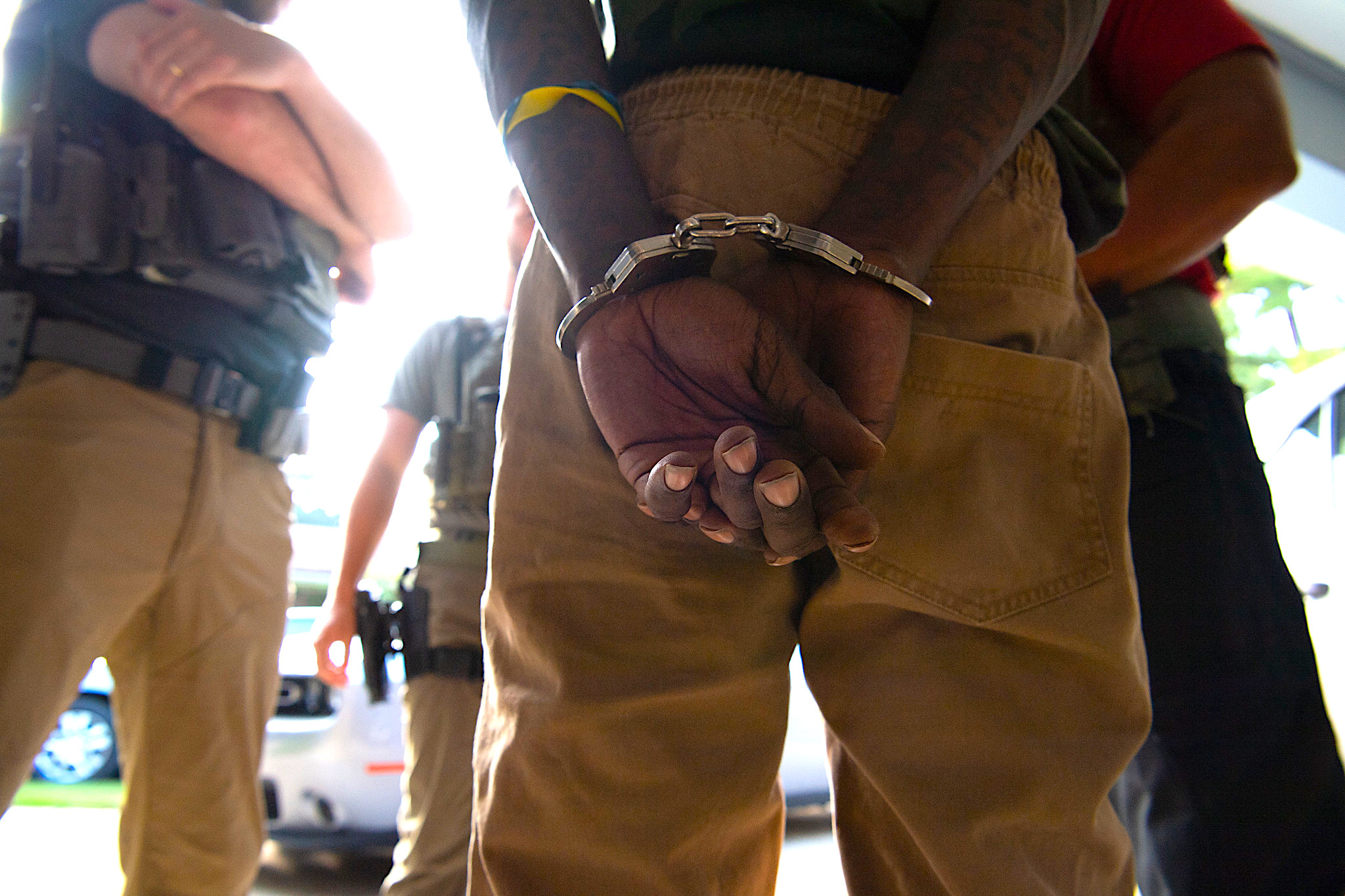
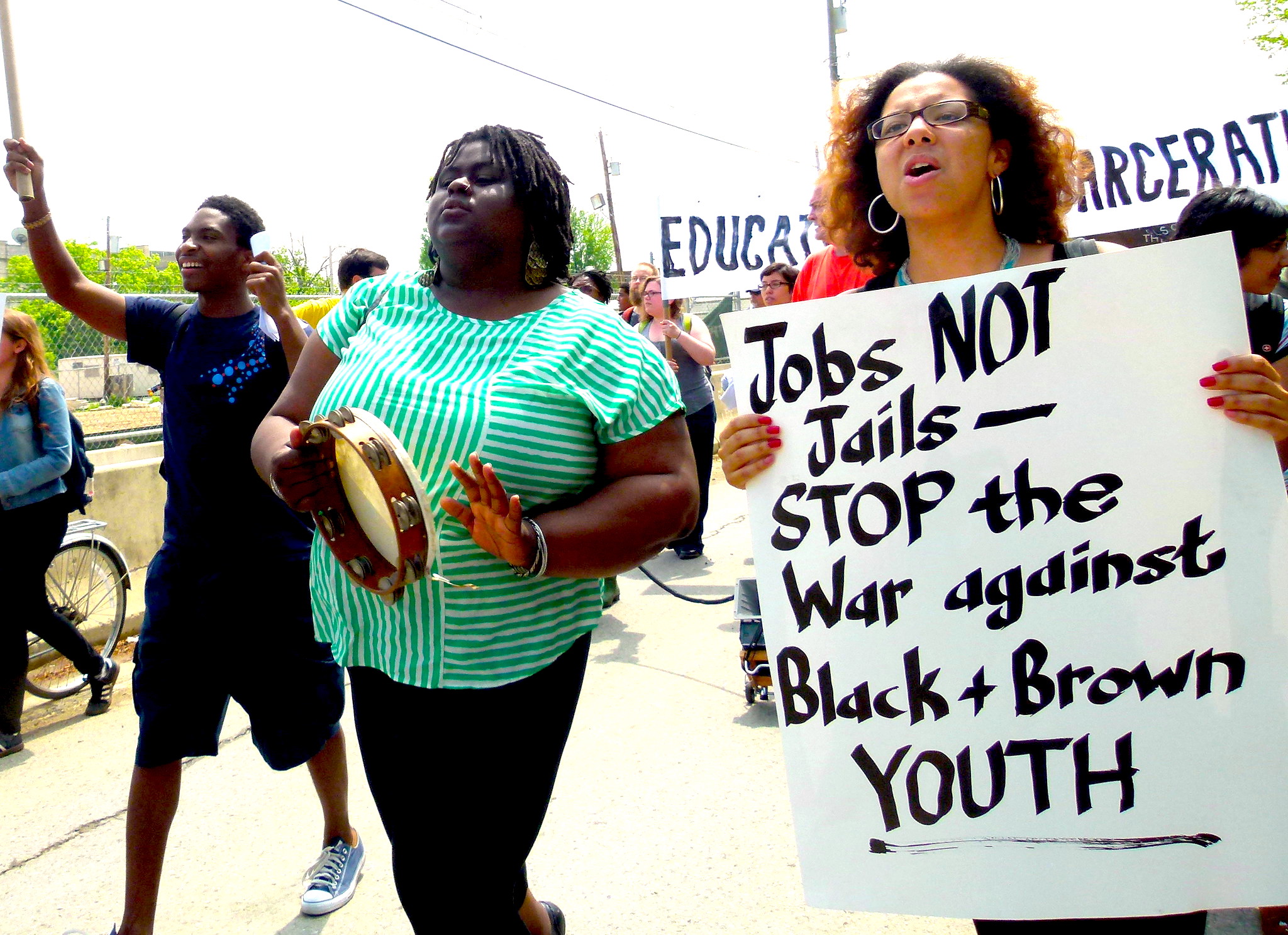
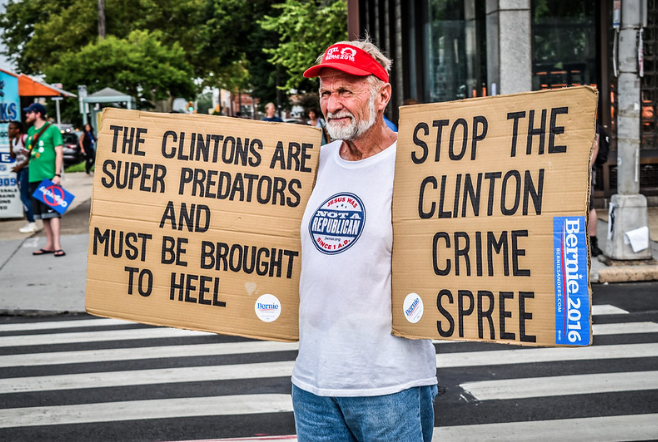
Easy to blame those not in power (Nixon dead, the Clintons seemingly followed by the ghost of Jeffrey Epstein as well as their $500,000 bribe from Putin in 2010 when Hillary was Secretary of State.) We all know by now that the Drug Trade has supported our Intelligence Agency Wars (mostly CIA) since at least the Contras; that will not change.
The One Major Powerful Force still involved in the War on Drugs is President Joe Biden, who wrote the Senate version of the 1994 Omnibus Crime Bill (basically doubling incarceration in the US, requiring private, very profitable prisons) and bragged that his crime bill does “everything but hang people for jaywalking.” “In 1986, Biden sponsored and co-wrote the Anti-Drug Abuse Act which caused a large disparity between the sentencing of crack cocaine and powder cocaine users” (some joked that was to protect his son Hunter.) “Black drug users were more likely than whites to use crack and hence were incarcerated in larger numbers.”
So the Big Question: how could someone write an article about the Drug War in the US and its unfair effects on the Poor and particularly Black incarceration rates without mentioning a Main Architect Joe Biden? This is historical FACT, but is ignored?
Nelson Rockefeller has a favourable reputation which he simply does not deserve.
His advocacy of the use of nuclear weapons, for example, is every bit as disturbing as anything similarly advocated by Barry Goldwater.
At a meeting with President Kennedy in the White House during 1961, he asked with regard to the conflict in Vietnam:
“Why don’t we use tactical nuclear weapons against them?”
Marcus Raskin was there at the time and saw how disturbed President Kennedy was by such a dangerous proposal.
“You know, we’re not going to do that” he replied.
(JFK and the Unspeakable: Why he Died and why it Matters by James W. Douglass).
Within five years, he predicted, there would be 30,000 “more murderers, rapists, and muggers on the streets” who would “place zero value on the lives of their victims, whom they reflexively dehumanize as just so much worthless ‘white trash.’”
The numbers may be off but this description of the increase in police and their brutality is pretty accurate except for the color of the “trash”.
A fantastic article Mr McCoy, thank you.
The politicians put us into an unwinable, colonial war, the soldiers forced to fight this war try to escape the terrible situation by taking drugs and the us gets stuck with a “drug” war that continues to this day. Most of the soldiers in this war are poor or/and black so they get blamed for the terrible situation. Some leaders!